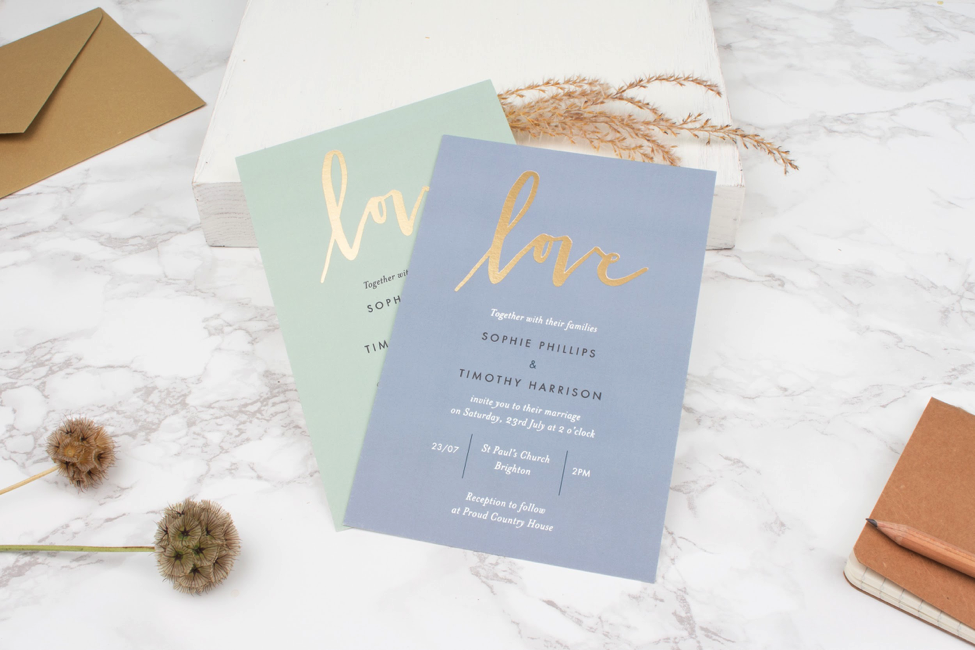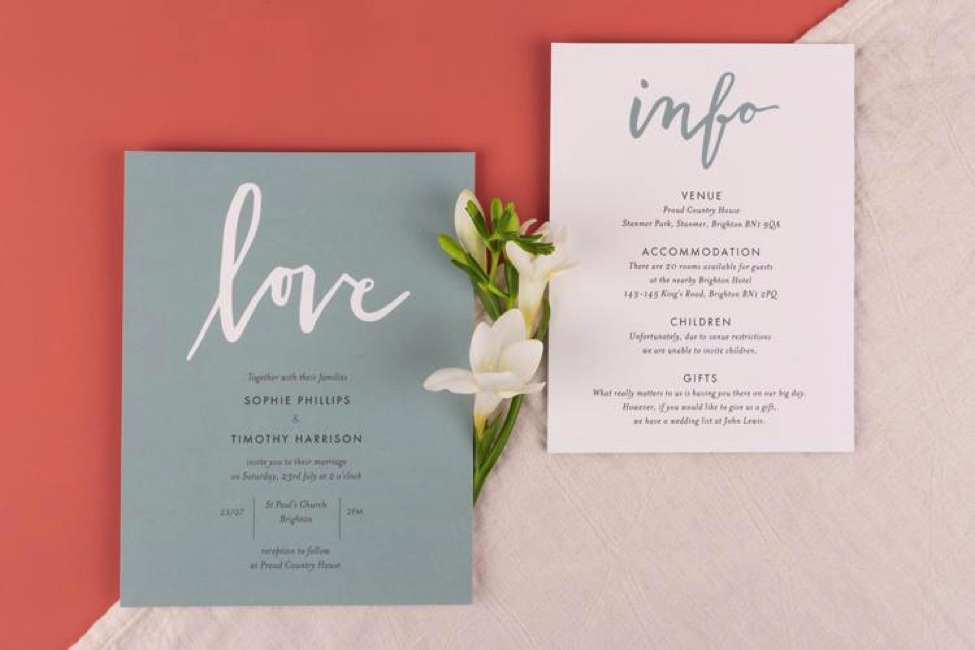 Wedding invitation wording can feel like you’re walking a tightrope. You’re trying to balance expressing yourselves as a couple, while at the same time honouring wedding tradition, particularly if you’re having a religious service. On top of that, and most importantly, you’re trying to provide all of the essential details (without offending anyone!)
Wedding invitation wording can feel like you’re walking a tightrope. You’re trying to balance expressing yourselves as a couple, while at the same time honouring wedding tradition, particularly if you’re having a religious service. On top of that, and most importantly, you’re trying to provide all of the essential details (without offending anyone!)
Not to fear, we’re here to show you how to tick all the boxes andcompose the perfect wedding invitation. Let’s jump right into it!
Essentials To Include in The Invite
There are some things that all effective invites must contain as non-negotiables. Including these key details will make sure that your guests are all clued up and there are no misunderstandings:
- The date and time of the wedding and reception
- The address of the venue, for both the ceremony and reception
- Which parts of the day the guest is invited to; usually either the reception, or both the ceremony and reception
- RSVP information – if you’re not sending out an RSVP card, then include an email address or phone number
- RSVP deadline – to prevent any last minute surprises
How to Word Your Invite
The Host Line
In the UK, US and most of Europe, the bride’s parents traditionally fund the wedding. If this is the case then the wedding invitation is usually addressed as being from the bride’s parents. For example:
Mr & Mrs John Smith
request the pleasure of
(Guest name)
at the marriage of their daughter
Sarah
to
Mr Steven Jones
…
However, for Arabic and some African weddings, as well as in Indonesia, Thailand, Taiwan, Hong Kong and the Philippines, the groom’s parents traditionally pay for the wedding, in which case it would be their names in the top line.
If instead, you are funding your own wedding, or if you’re having a less traditional wedding, you can instead opt for the following wording:
Together with their families
Sophie Phillips
&
Timothy Harrison
invite you to their marriage
….
The Bride & Groom’s Names
If not already mentioned in the host section, the names of the bride and groom should come next, taking prime position in the center of the invitation. It is customary for the name of the bride to come before the groom’s name, and if the invitation is from the bride’s parent, the bride is usually referred to by her first and any middle names, with the groom being referred to by his full title.
Ultimately these are optional formalities, if you wish to list your names in a different order or format then go ahead – it’s your wedding after all!
The Date, Time and Location of The Wedding
You should include the date, time and location next. If you wish to send out highly formal invitations, instead consider including the full address on a separate card.
If your reception is at a different venue to the ceremony, list it on a new line underneath the reception location, otherwise, you can just add ‘reception to follow’. Make sure to include the time if the reception isn’t immediately after the ceremony.
…
Invite you to their marriage
On Saturday, 23rd July at 2 o’clock
St Paul’s Church, Brighton
Reception to follow
At Proud Country House
As you can see in the example above, the date and time is written in full with no numerals – this is a tradition for formal weddings. For more casual weddings, numerals are completely acceptable. It’s up to you if you want to add ‘a.m.’ or ‘p.m.’.
Including a Separate RSVP Card
As a finishing touch, most couples include a response card for the guest to fill out and mail back. Although optional, an RSVP card can be a handy way to keep tabs on who’s coming, as well as a good opportunity to ask the guests about any dietary preferences they have. If you’re having a more informal affair, it is completely acceptable to ask guests to RSVP via email or phone.
If you do decide to include an RSVP card, there’s no right or wrong way to format it. However, there are a few key things that should be included:
- A blank line for the guests to add their names, along with the name of anyone else who will be attending with them (if you’ve extended a plus-one or family invitation to them)
- The RSVP deadline date (this is usually three or four weeks before the wedding so you can arrange ample food and seating)
- A section for your guest to tick whether they can attend or not
- If you are offering a selection of entrées, a section for the guest to indicate their choice
Here is an example that covers the essentials for you to use and adapt as you like:
RSVP
Please respond by (date)
M__________________
____Accepts with pleasure ____ Declines with regret
Choice of starter
____ Starter 1 ____Starter 2 ____ Starter 3
At some point you will also need to think about the wedding invitations themselves. Wedding invitations from Rosemood are a beautiful way to request the presence of your nearest and dearest on your big day.
There you have it. While it can seem like a lot of formality to wade through, with these useful tips you can be confident in wording your wedding invitations in preparation for a day to remember.










